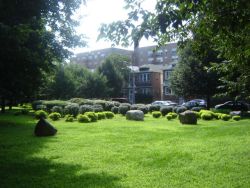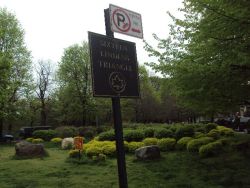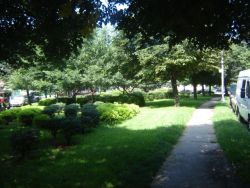Sixteen Lindens Triangle
Sixteen Trees Triangle
Sixteen Trees Triangle, so named for the 16 American Linden (Tilia americana) trees bordering the triangle, first came under the City’s jurisdiction in 1940. In 1968, a local law transferred the property to Parks. The open space consists of the 16 trees, grass, and clover, a simple greenspace for the community.
The American Linden, also known as American Basswood, Limetree, and Bee Tree, has many different applications. The tree’s white blossoms of late June and early July provide bees with the nectar necessary to distill white honey, considered the finest among honey aficionados. The odorless wood from the Linden tree can be used for storing food, making utensils or as paper pulp and the inner bark was used by the Native Americans to make rope. Teas made from the leaves of the tree are said to sooth colds, coughs, headaches, and stomachaches as well as provide for restful sleep. A hardy tree growing easily from stump sprouts, the American Linden can easily survive the harsh city climate. The tree’s majestic look make it a perfect border for Sixteen Trees Triangle.
Check out your park's Vital Signs
Clean & Safe
Green & Resilient
Empowered & Engaged Users
Share your feedback or learn more about how this park is part of a
Vital Park System



